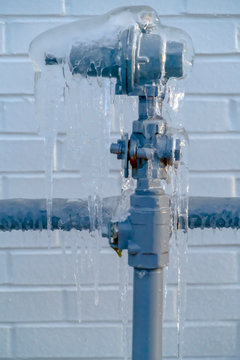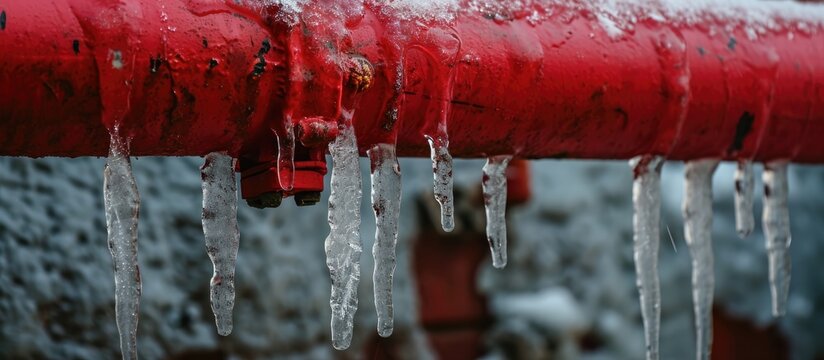Avoiding Frozen Plumbing in Winter: Expert Strategies
Avoiding Frozen Plumbing in Winter: Expert Strategies
Blog Article
Just how do you actually feel in regards to Prevent Frozen Pipes ?

Cold weather can wreak havoc on your plumbing, especially by freezing pipelines. Right here's just how to stop it from happening and what to do if it does.
Introduction
As temperatures drop, the risk of frozen pipelines rises, possibly leading to pricey repairs and water damage. Understanding just how to prevent frozen pipes is critical for house owners in chilly climates.
Prevention Tips
Insulating vulnerable pipelines
Cover pipelines in insulation sleeves or make use of heat tape to secure them from freezing temperature levels. Focus on pipelines in unheated or outside locations of the home.
Heating techniques
Keep indoor spaces adequately heated up, specifically areas with plumbing. Open closet doors to permit warm air to circulate around pipes under sinks.
Exactly how to recognize frozen pipes
Try to find lowered water circulation from taps, uncommon smells or sounds from pipelines, and noticeable frost on revealed pipelines.
Long-Term Solutions
Architectural modifications
Take into consideration rerouting pipelines away from exterior walls or unheated locations. Include additional insulation to attics, basements, and crawl spaces.
Updating insulation
Purchase high-grade insulation for pipelines, attics, and wall surfaces. Correct insulation assists maintain regular temperatures and reduces the threat of frozen pipelines.
Safeguarding Outdoor Pipes
Yard pipes and outdoor taps
Disconnect and drain yard hose pipes prior to winter. Set up frost-proof spigots or cover exterior faucets with protected caps.
Recognizing Frozen Pipes
What creates pipelines to freeze?
Pipes ice up when revealed to temperature levels below 32 ° F (0 ° C) for extended periods. As water inside the pipelines ices up, it increases, taxing the pipeline wall surfaces and possibly creating them to break.
Risks and problems
Icy pipelines can bring about supply of water interruptions, building damages, and costly repair services. Burst pipes can flooding homes and create substantial structural damages.
Indicators of Frozen Water Lines
Identifying icy pipes early can prevent them from breaking.
What to Do If Your Pipes Freeze
Immediate activities to take
If you presume frozen pipelines, keep taps open up to soothe pressure as the ice thaws. Use a hairdryer or towels taken in hot water to thaw pipes slowly.
Verdict
Preventing icy pipes needs proactive procedures and quick actions. By recognizing the causes, signs, and safety nets, home owners can secure their plumbing during cold weather.
5 Ways to Prevent Frozen Pipes
Drain Outdoor Faucets and Disconnect Hoses
First, close the shut-off valve that controls the flow of water in the pipe to your outdoor faucet. Then, head outside to disconnect and drain your hose and open the outdoor faucet to allow the water to completely drain out of the line. Turn off the faucet when done. Finally, head back to the shut-off valve and drain the remaining water inside the pipe into a bucket or container. Additionally, if you have a home irrigation system, you should consider hiring an expert to clear the system of water each year.
Insulate Pipes
One of the best and most cost-effective methods for preventing frozen water pipes is to wrap your pipes with insulation. This is especially important for areas in your home that aren’t exposed to heat, such as an attic. We suggest using foam sleeves, which can typically be found at your local hardware store.
Keep Heat Running at 65
Your pipes are located inside your walls, and the temperature there is much colder than the rest of the house. To prevent your pipes from freezing, The Insurance Information Institute suggests that you keep your home heated to at least 65 degrees, even when traveling. You may want to invest in smart devices that can keep an eye on the temperature in your home while you’re away.
Leave Water Dripping
Moving water — even a small trickle — can prevent ice from forming inside your pipes. When freezing temps are imminent, start a drip of water from all faucets that serve exposed pipes. Leaving a few faucets running will also help relieve pressure inside the pipes and help prevent a rupture if the water inside freezes.
Open Cupboard Doors
Warm your kitchen and bathroom pipes by opening cupboards and vanities. You should also leave your interior doors ajar to help warm air circulate evenly throughout your home.

Hopefully you enjoyed reading our article on How to Prevent Your Pipes From Freezing. Thanks a lot for spending some time to read our piece. For those who liked our blog entry please remember to share it. Many thanks for your time. Don't hesitate to come visit our site back soon.
Visit The Following Page Report this page